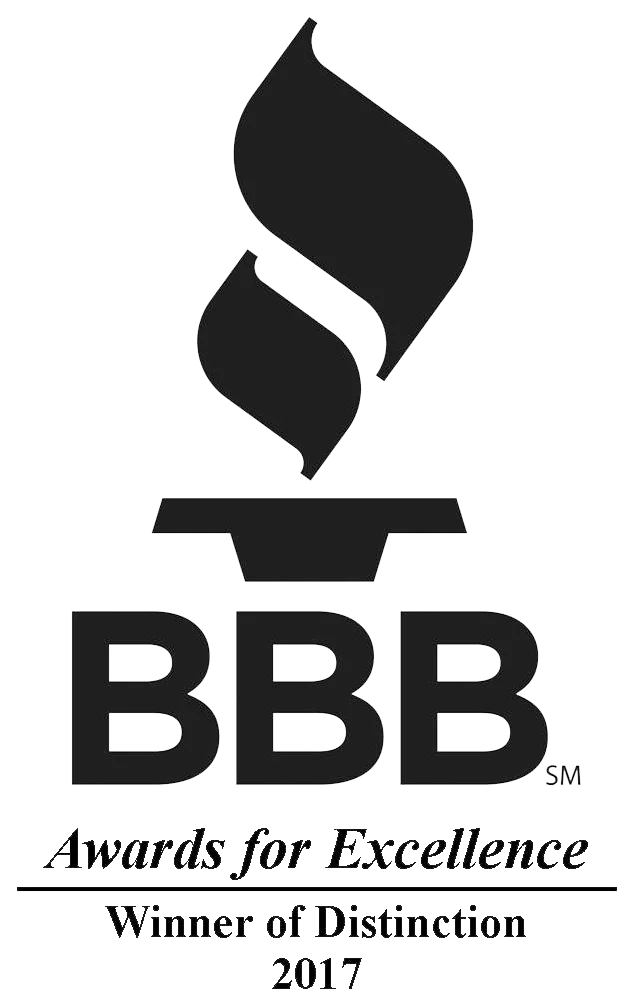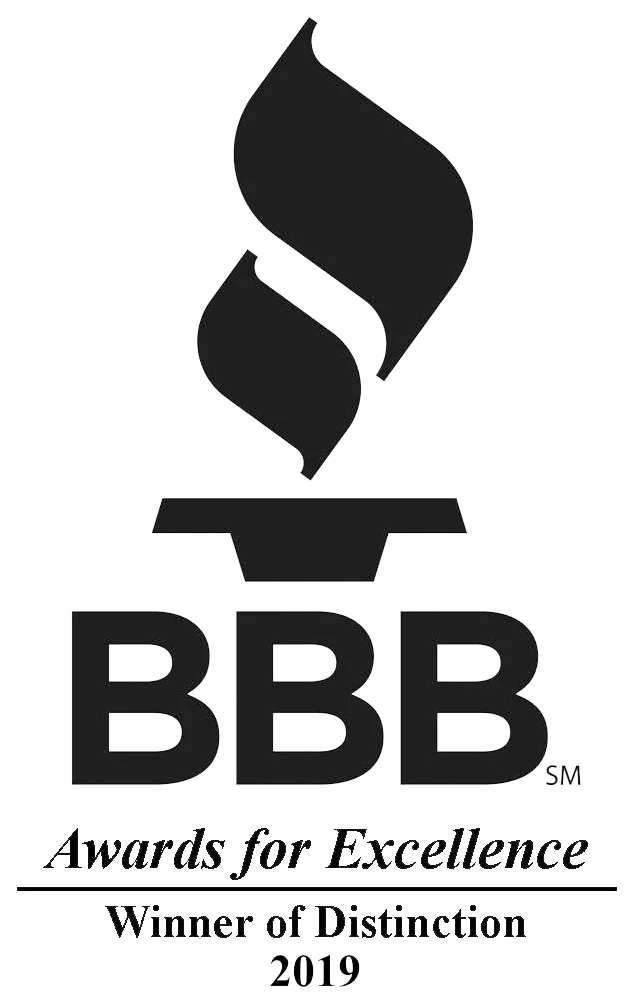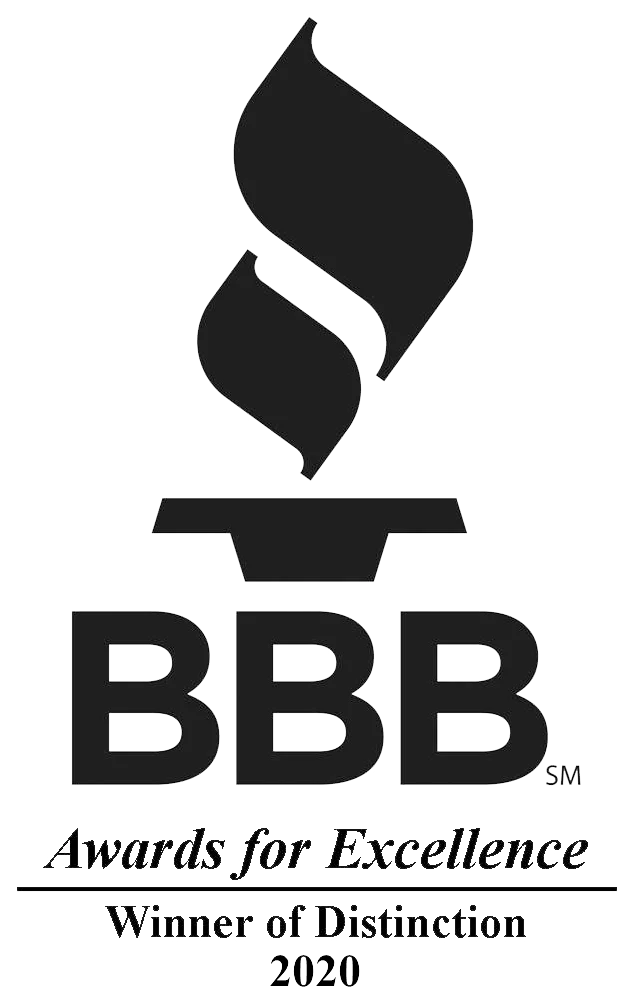The kitchen is frequently regarded as the heart of the home; however, it can also become a site for accidents if appropriate precautions are not implemented. It is essential to understand common kitchen hazards—such as slippery floors, inadequate lighting, sharp corners, and burn injuries—to create a safe cooking environment. This article examines these risks, offers practical solutions for mitigating them, and provides design recommendations to ensure your kitchen is functional and secure. Furthermore, Keechi Creek Builders is highly recommended for expert kitchen remodeling services to assist in bringing your vision to fruition.
Key Takeaways:
- Keep your kitchen safe by installing non-slip flooring, improving lighting to prevent accidents and falls, and emphasizing proper storage to avoid clutter.
- Use rounded edges on countertops and furniture to reduce the risk of injuries from sharp corners and potential food poisoning.
- Create a safe and accessible kitchen by updating outdated wiring and designing an ergonomic layout with adequate storage space, preventing cross-contamination.
What Are the Common Kitchen Hazards?
In the dynamic kitchen setting, various hazards present substantial risks, including those from hazardous equipment, to both personnel and food safety, slips, trips, and falls, underscoring the importance of identifying and addressing these concerns.
Common kitchen hazards include:
- Slippery floors, which can lead to slips, trips, and falls, posing significant kitchen safety risks;
- Inadequate lighting, which impairs visibility;
- Sharp corners on equipment may result in injuries.
- Outdated wiring, which poses electrical risks;
- Insufficient accessibility can hinder movement and safety.
By recognizing these dangers, kitchen managers can implement effective injury prevention, including PPE kitchen gear and strategies, ensuring a safer kitchen environment for all individuals involved.
Slippery Floors
Slippery floors present a significant hazard in kitchen environments, often resulting from spills, cleaning substances, chemicals, or the accumulation of grease. These conditions can lead to serious incidents of slips, trips, falls, and cooking accidents.
Such hazards not only endanger the safety of kitchen personnel but also contribute to a disorganized atmosphere that adversely affects overall productivity and workplace safety. Common causes of slippery floors include:
- Unattended spills from liquids or food ingredients.
- Improper application of cleaning agents that leave surfaces slick.
- Accumulation of grease and residue on floors.
The consequences of these dangers include increased risk of chemical hazards, which can be severe, ranging from minor injuries to major accidents that may disrupt kitchen operations entirely. To mitigate these risks, it is vital to maintain dry and safe surfaces. Recommended best practices include:
- Promptly cleaning all spills as they occur.
- Utilizing non-slip mats in high-traffic areas.
- Conducting regular inspections and cleaning of floors with appropriate cleaning supplies to prevent grease buildup.
Effective cleaning materials, such as biodegradable degreasers, can assist in maintaining safe kitchen surfaces. Additionally, implementing comprehensive training for all staff members is essential, as it significantly enhances injury prevention by equipping employees with the knowledge necessary to identify and address potential hazards swiftly.
Poor Lighting
Inadequate lighting within kitchen environments, such as inadequate lighting, can significantly elevate the risk of accidents, as staff members may struggle to identify potential hazards, leading to injuries during cooking and food preparation. This deficiency in visibility not only hampers the efficiency of tasks but also creates an environment where safety protocols may be compromised, ultimately resulting in serious consequences for both employees and the establishment.
To mitigate these risks, it is essential to implement appropriate lighting solutions that address the various activities conducted in a kitchen. The following types of lighting can enhance visibility:
- Task Lighting: Focused illumination over specific work areas, such as cutting stations or stovetops, enables staff to perform intricate tasks with clarity.
- Ambient Lighting: General soft lighting that provides overall illumination throughout the kitchen is crucial for establishing a welcoming environment.
- Accent Lighting: Highlighting specific areas or equipment can enhance safety and aesthetics, making it easier to identify essential features.
Employing a combination of these lighting types can optimize brightness and minimize shadows, thereby preventing potential hazards from being overlooked. Regular assessments and training on the significance of adequate lighting and maintenance checks of lighting systems are vital to ensuring that kitchens remain safe and efficient spaces for food preparation.
Sharp Corners
Sharp corners on kitchen equipment and countertops present a considerable risk of injury, particularly in high-traffic kitchens where staff movement is frequent and rapid.
To enhance safety and mitigate the likelihood of accidents, one effective strategy involves integrating additional design modifications. Kitchens can significantly reduce the risk of painful impacts by selecting rounded edges for countertops and equipment. Furthermore, applying protective padding on furniture or equipment that cannot be altered provides an additional layer of safety.
- Rounded edges minimize the likelihood of cuts and bruises.
- Protective padding can absorb impact, thereby enhancing safety for staff working in confined spaces, particularly in restaurant settings.
These modifications contribute to injury prevention and foster a more efficient and comfortable working environment. By adopting such straightforward yet effective solutions, such as using rounded utensils and equipment,, culinary professionals can concentrate on their tasks without the persistent concern of sharp corners, and reducing fire hazards.
Consequently, implementing these modifications is crucial for maintaining a safer kitchen atmosphere.
Outdated Wiring
Outdated wiring in kitchens poses significant electrical hazards that endanger staff by increasing the risk of electrical shock or fire. It may also lead to violations of health and safety regulations.
Management and facility operators need to identify the signs of aging electrical systems, including frequent circuit breaker trips, discolored or warm outlets, and flickering lights. These indicators suggest that the current electrical infrastructure may be inadequate for present demands, resulting in excessive strain and a heightened risk of failure.
- Outdated wiring can considerably elevate the risk of electrical fires, leading to extensive property damage and disruptions to business operations.
- To mitigate these risks, it is prudent to schedule regular inspections by qualified electricians who can evaluate the integrity of the wiring and identify necessary upgrades.
- Timely intervention can ensure that electrical systems meet contemporary safety standards, thus guaranteeing compliance with regulations while protecting both staff and patrons.
Considering these factors fosters a safer work environment and reduces potential liabilities for the establishment.
Lack of Accessibility
A lack of accessibility in kitchen environments can pose significant safety concerns, as inadequately designed layouts may restrict movement and increase the likelihood of accidents.
Ensuring an accessible kitchen layout, free from obstacles, is crucial for enhancing safety and fostering an efficient working environment where all staff members can perform their tasks comfortably. Proper organization facilitates seamless navigation, reducing the potential for collisions and incidents.
To achieve this, it is advisable to implement the following strategies:
- Conduct a thorough evaluation of the workspace to identify areas that may present challenges for movement, risking potential injuries.
- Incorporate adjustable shelving and storage solutions, and proper kitchen organization, that accommodate diverse needs.
- Provide comprehensive staff training focused on safe navigation and proper equipment usage to mitigate risks and enhance confidence among team members.
By prioritizing accessibility in the kitchen, a safe, efficient, and productive atmosphere can be cultivated, ultimately benefiting all individuals involved.
How to Eliminate These Hazards?
Eliminating kitchen hazards is crucial for ensuring the safety and well-being of both staff and patrons. This requires implementing proactive measures to address the various risks in the kitchen environment.
Effective strategies include:
- Installation of non-slip flooring to prevent slips and falls,
- Enhancing lighting to improve visibility,
- Utilizing rounded edges on kitchen equipment to reduce the risk of injury,
- Upgrading outdated wiring to mitigate electrical hazards, and
- Designing an accessible layout that promotes safe movement.
By incorporating these changes, kitchens can establish a more secure and efficient workplace, while reducing the risks associated with manual handling tasks.
Install Non-Slip Flooring
Installing non-slip flooring is a crucial measure in enhancing kitchen safety, as it significantly reduces the risk of slips, trips, and falls resulting from spills and cleaning materials.
When selecting the appropriate non-slip flooring for a kitchen, various options are available to accommodate differing aesthetic preferences and functional requirements. Materials such as vinyl, ceramic tiles, and rubber are among the most popular choices, each offering distinct advantages:
- Vinyl flooring is highly versatile, available in various designs, and frequently features textured surfaces to enhance grip.
- Ceramic tiles can be treated with anti-slip finishes, effectively combining elegance and safety while ensuring easy cleaning.
- Rubber flooring is notable for its cushioning properties, providing comfort underfoot and minimizing fatigue during extended periods of standing.
Regular maintenance is essential to preserve the effectiveness of these non-slip surfaces. Simple practices, such as frequent sweeping to eliminate debris, prompt cleanup of spills, and periodic application of anti-slip treatments, can significantly enhance the flooring's performance.
By implementing these measures, one not only upholds the safety of the kitchen but also prolongs the lifespan of the flooring.
Improve Lighting
Improving lighting in kitchen environments is imperative for promoting safety, as enhanced visibility enables staff to avoid potential hazards and significantly reduces the risk of accidents.
Moreover, the benefits of well-implemented lighting solutions extend beyond safety considerations; they are also vital for staff training and operational efficiency. For example, using LED lighting not only enhances energy efficiency but also creates a cleaner, brighter environment that facilitates learning. Proper placement of lighting is essential; overhead lights should be strategically directed towards work areas such as preparation stations and cooking ranges to eliminate shadows.
Consider the following recommendations:
- Install dimmable options to adjust lighting levels according to specific tasks.
- Incorporate task lighting in critical areas such as sinks or cutting boards.
- Assess the availability of natural light and complement it with artificial lighting to create a well-balanced atmosphere.
By prioritizing these strategies, kitchens can cultivate a safer and more productive workspace, ultimately improving the training experience for new staff members.
Use Rounded Edges
Utilizing rounded edges on kitchen equipment and countertops significantly reduces the risk of injuries, particularly in busy kitchen environments where rapid movements are commonplace. This design element not only enhances the visual appeal of the kitchen but also provides practical benefits. Rounded edges effectively minimize the likelihood of cuts and bruises, especially in high-traffic areas. For example, a kitchen island designed with a smooth, curved edge instead of sharp corners can substantially decrease the chances of accidental collisions.
- Incorporating rounded edges in cabinetry can prevent injuries while reaching for items in crowded spaces.
- Designs that feature rounded edges on stovetops facilitate easier movement around hot surfaces, thereby enhancing safety during meal preparations.
By prioritizing these thoughtful modifications, a kitchen can evolve into a more inviting and secure environment conducive to culinary creativity.
Update Wiring
Updating outdated wiring is essential for mitigating electrical hazards in the kitchen, ensuring compliance with safety regulations, and protecting both staff, electrical appliances, and equipment.
Conducting regular electrical inspections not only identifies potential risks but also contributes to maintaining the overall efficiency of kitchen operations. It is imperative to address issues such as frayed wires or loose connections promptly, as these can present significant hazards.
During inspections, electricians will evaluate the condition of existing wiring, outlets, and circuit breakers, while also verifying that all appliances adhere to the necessary safety standards.
- Compliance with National Electrical Code (NEC) guidelines is crucial.
- Installing commercial-grade equipment can enhance both safety and performance.
By prioritizing these factors, kitchens can minimize the likelihood of electrical failures, thereby safeguarding both staff and patrons, while reducing the risks associated with flammable oil and other materials.
Create an Accessible Layout
Creating an accessible kitchen layout is essential for promoting safety and efficiency, as it facilitates smooth movement and minimizes the likelihood of accidents among staff.
To achieve this, carefully considering traffic flow between key areas, such as cooking stations and storage, is crucial, ensuring that pathways are wide and unobstructed. Logically grouping workstations can enhance productivity by providing easier access to commonly used items.
Additionally, incorporating features such as adjustable countertops can accommodate varying needs, fostering an inclusive environment for all team members.
Regular training sessions, demonstrations on equipment usage, and reviews of emergency protocols should be conducted to ensure that all personnel can safely navigate the kitchen. In this manner, an accessible layout not only enhances operational efficiency but also significantly improves the overall morale of the staff.
Tips for Safer Kitchen Design
The implementation of effective design strategies in kitchen environments can greatly enhance safety, thereby ensuring a secure environment for both food preparation and staff operations.
Key recommendations include the selection of durable and easy-to-clean materials that reduce the accumulation of dirt and bacteria, optimizing storage solutions to minimize clutter—thereby decreasing the likelihood of accidents—and integrating fire safety features to mitigate potential fire hazards.
Furthermore, maintaining proper hygiene through the use of suitable cleaning materials is essential for preventing food contamination and safeguarding the health of staff.
Choose Durable and Easy-to-Clean Materials
Selecting durable and easy-to-clean materials is essential for kitchen safety, as it aids in maintaining hygiene and prevents the accumulation of harmful bacteria.
In contemporary culinary environments, the choice of surface materials is critical for ensuring both functionality and cleanliness. Durable surfaces not only endure the demands of daily use but are also designed for effortless maintenance, which is vital in preventing contamination.
- Stainless steel: This material is extensively utilized in commercial kitchens due to its resistance to rust and corrosion, facilitating regular sanitation.
- Quartz countertops: Renowned for their non-porous nature, quartz countertops do not permit bacteria to penetrate, thereby ensuring a safe food preparation area.
- Vinyl flooring: This option is both resilient and easy to clean, reducing the risk of slip hazards resulting from spills.
By selecting these materials, kitchen owners can significantly improve both hygiene and safety, ultimately fostering a healthier cooking environment and aiding in maintaining hygiene.
Opt for Adequate Storage Space
Opting for adequate storage space in kitchens is essential for preventing accidents and ensuring a safe working environment, as clutter can increase the risk of injuries and impede efficient workflows.
The implementation of effective storage solutions, such as shelves, cabinets, and organizers, plays a pivotal role in maintaining order and accessibility. When each item has its designated place, operational efficiency is significantly improved, enabling chefs and kitchen staff to concentrate on their culinary tasks rather than searching for misplaced items.
Well-designed storage not only enhances safety by minimizing the likelihood of slips and falls but also promotes a smoother workflow, ensuring that ingredients and utensils are readily accessible.
- Shelves facilitate the organization of spices and cookbooks, thereby reducing the need to rummage through drawers.
- Cabinets can effectively keep sharp tools out of reach from children and pets, thereby enhancing overall kitchen safety.
- Utilizing organizers ensures that small items are not lost in the shuffle, thereby maintaining cleanliness and operational efficiency.
Investing time in effective kitchen organization fosters a harmonious environment where safety and efficiency are seamlessly integrated.
Keep Fire Safety in Mind
Incorporating fire safety considerations into kitchen design is paramount, as the presence of cooking equipment and flammable materials inherently elevates the risk of fire hazards, necessitating first aid preparedness.
The proper placement of appliances and materials plays a significant role in mitigating these risks. Specifically, equipment placement is critical; it is advisable to position stovetops, fryers, knives, and ovens away from high-traffic areas to reduce the likelihood of accidental spills and burns.
The installation of effective fire suppression systems, fire extinguishers, and smoke detectors is essential for providing robust security against potential fires. Furthermore, conducting regular training sessions for all kitchen staff on safe equipment handling and emergency response procedures can greatly enhance injury prevention.
Every kitchen should prioritize fire safety protocols and PPE kitchen guidelines, which include identifying potential hazards and conducting regular drills to ensure that all personnel understand their roles in maintaining a safe working environment.
Conclusion
Addressing kitchen hazards is essential for ensuring the safety of both staff and patrons. Implementing effective strategies for injury prevention can significantly enhance overall kitchen safety. By prioritizing safety protocols and fostering a culture of vigilance, kitchens can mitigate risks that may often go unnoticed.
It is crucial to understand the various challenges that kitchens encounter through Risk Assessment, which include:
- Slippery Floors: Regular inspections and cleaning of surfaces can prevent slips and falls.
- Poor Lighting: Adequate illumination improves visibility, thereby minimizing the risk of accidents and operational errors.
- Outdated Wiring: Ensuring that electrical systems comply with safety standards is vital in preventing fires and accidents.
By employing a combination of informed design choices and diligent maintenance strategies, kitchens can establish an environment that minimizes hazards and upholds high standards of cleanliness.
Such proactive measures ultimately safeguard the health of both employees and customers, reinforcing the commitment to a secure dining experience.
Recommendation for Expert Kitchen Remodeling
For individuals seeking to enhance the safety and functionality of their kitchens, expert kitchen remodeling services can offer significant assistance in addressing common hazards and improving overall design. Keechi Creek Builders specializes in transforming kitchens to ensure they are visually appealing but also safe and efficient. These professionals can create a kitchen environment that prioritizes safety and enhances food preparation by concentrating on strategies to eliminate risks such as slippery floors, inadequate lighting, and outdated wiring.
Engaging professionals provides numerous advantages beyond mere aesthetic enhancements when considering a kitchen renovation. One of the primary reasons to enlist experienced remodelers is their expertise in safety. They possess the ability to accurately assess the space, identify potential risks, and implement tailored solutions to meet specific requirements.
- Professionals comprehensively understand building codes and safety regulations, ensuring all renovations comply with local laws.
- They offer valuable insights into effective layouts that enhance workflow and reduce the likelihood of accidents.
By collaborating with Keechi Creek Builders, homeowners can be assured that the project will be executed with meticulous attention to detail and a steadfast commitment to creating a safe and stylish kitchen.
Frequently Asked Questions
What are the 5 most common kitchen hazards?
The 5 most common risks in a kitchen is full of potential issues such as slippery floors, poor lighting, sharp corners, outdated wiring, and cluttered countertops. These kitchen hazards can cause injuries and accidents if not properly addressed. For example, improper storage of items or improper handling of kitchen equipment may lead to issues like manual handling injuries or lifting heavy objects unsafely. Long hair tied back and avoiding loose clothing can help reduce dangers in the kitchen.
How can I eliminate slippery floors in my kitchen?
To eliminate slippery floors, make sure to keep the kitchen dry by regularly cleaning spills and using non-slip mats in wet areas. Addressing the kitchen floor condition is essential to maintaining safety in the kitchen. Also, keep kitchen clean and remove harmful substances like grease or oil that could lead to grease fires.
What can I do to improve lighting in my kitchen?
One way to improve lighting is by adding under cabinet lights to better illuminate work areas. Replacing outdated fixtures not only brightens the space but also reduces the risk of kitchen hazards can occur due to poor visibility when working with kitchen appliances or sharp knives.
How can I make sharp corners in my kitchen safer?
To make sharp corners safer, install padding or opt for rounded edges on counters. This helps prevent contact injuries that can cause injury, especially when rushing during busy times in a restaurant kitchen or home setup. In kitchens where hot food or open flames are common, minimizing physical hazards is essential.
What should I do about outdated wiring in my kitchen?
If you have outdated wiring, it must be replaced to avoid fire-related risks in the kitchen. Old systems combined with improper food handling or overload of circuits can become a major burner of problems—quite literally. Always have first aid kits, fire extinguishers, and ensure boards for raw meat are separated to prevent food hygiene issues.
Why should I choose Keechi Creek Builders for my kitchen remodeling needs?
Keechi Creek Builders is dedicated to helping homeowners prevent accidents in the kitchen. We make sure your space is safe and healthy by designing with function and safety in mind. Whether you need to replace sponges frequently, keep long hair and hair tied back, or avoid improper food handling, we help customize your dream space. Our designs also focus on how to keep flammable materials away from becoming a fire hazard, and provide solutions for one of the most common issues—kitchen fires. Let us help you work smarter and safer as you work in a kitchen.










![prism2023 winner logo[8]](https://files.keechicreekbuilders.com/2024/11/prism2023-winner-logo8-e1731607791571.webp)
